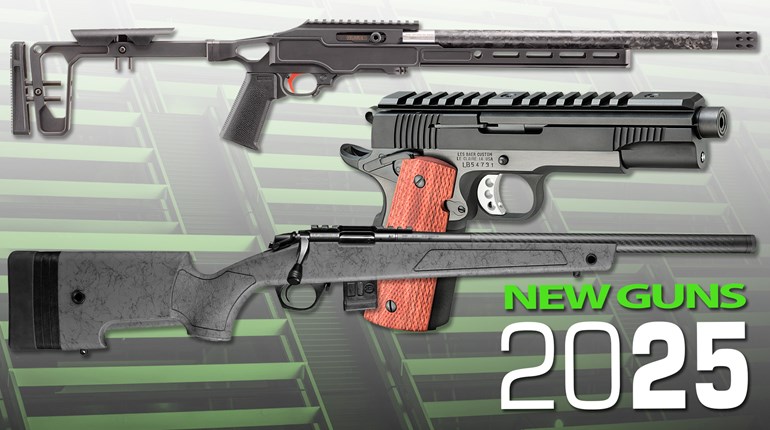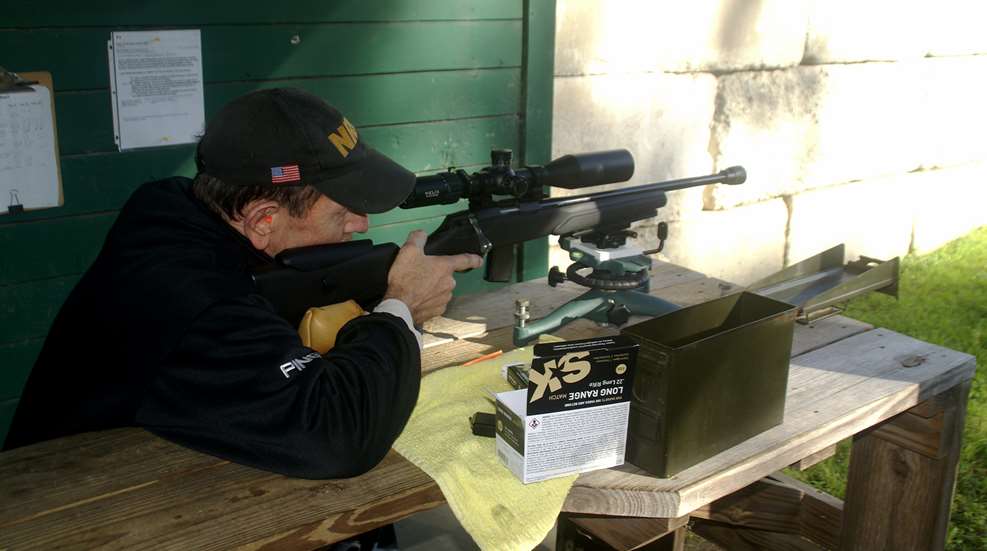
Regardless of a competitive shooter’s particular passion, whether it be trap, skeet, sporting clays, precision rifle, position rifle, silhouette, action shooting or precision pistol, there is a national governing body that sets match procedures, rules and classification standards. But none of them sprang into existence in the form we know them today. Every one of them began somewhere (often in the distant past) when a group of shooters got together and asked, “What if we ...?”
Not all of those “what ifs” panned out. But some of those ideas had their own power, and like a tiny acorn falling onto fertile ground, they slowly grew into the major national organizations that we enjoy today. The latest acorn to drop might well be the Know Your Limits rimfire rifle match. And it appears to have fallen on fertile ground.
Know Your Limits (commonly called KYL) is best described as a precision rimfire rifle match, but with some interesting twists. There is no national governing body as of yet, but some standards have emerged, and it is currently offered by a number of clubs stretching from Florida to Nevada, with more coming online almost daily.
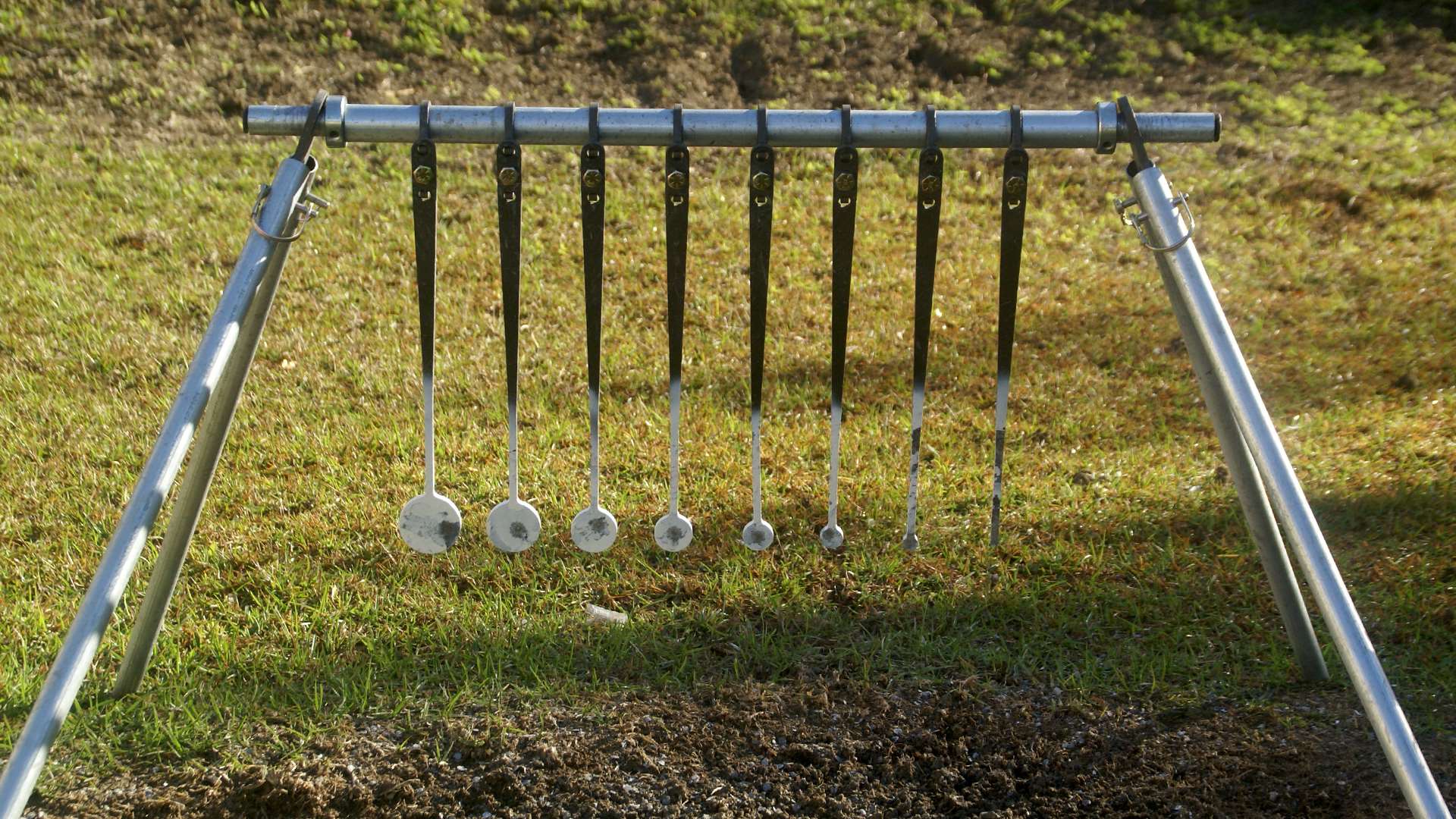
One standard is the target array. There are no paper targets and scoring rings. Instead, the targets are metal plates of different sizes hanging from a rack that swings when hit. There are eight plates hanging from a rack that measures about 30 inches across. The basic “standard” has the rack placed at 50 and 100 yards, with plates arranged largest to smallest from left to right.
The 50-yard target rack starts with a two-inch plate on the left and descends in size in ¼-inch increments. From left to right, these plates measure two-, 1¾-, 1½-, 1¼-, one-, ¾-, ½- and ¼-inch. The 100-yard plates begin ½-inch larger and descend in the same ¼-inch increments, resulting in (left to right) 2½-, 2¼-, two-, 1¾-, 1½-, 1¼-, one- and ¾-inch plates. They may be painted any color, with white or black being the most common. Each of these eight plates has a point value that the shooter receives with a hit. The typical value used (from largest to smallest, left to right) is 20, 20, 30, 40, 60, 80, 100 and 150 points, for a total of 500 points.
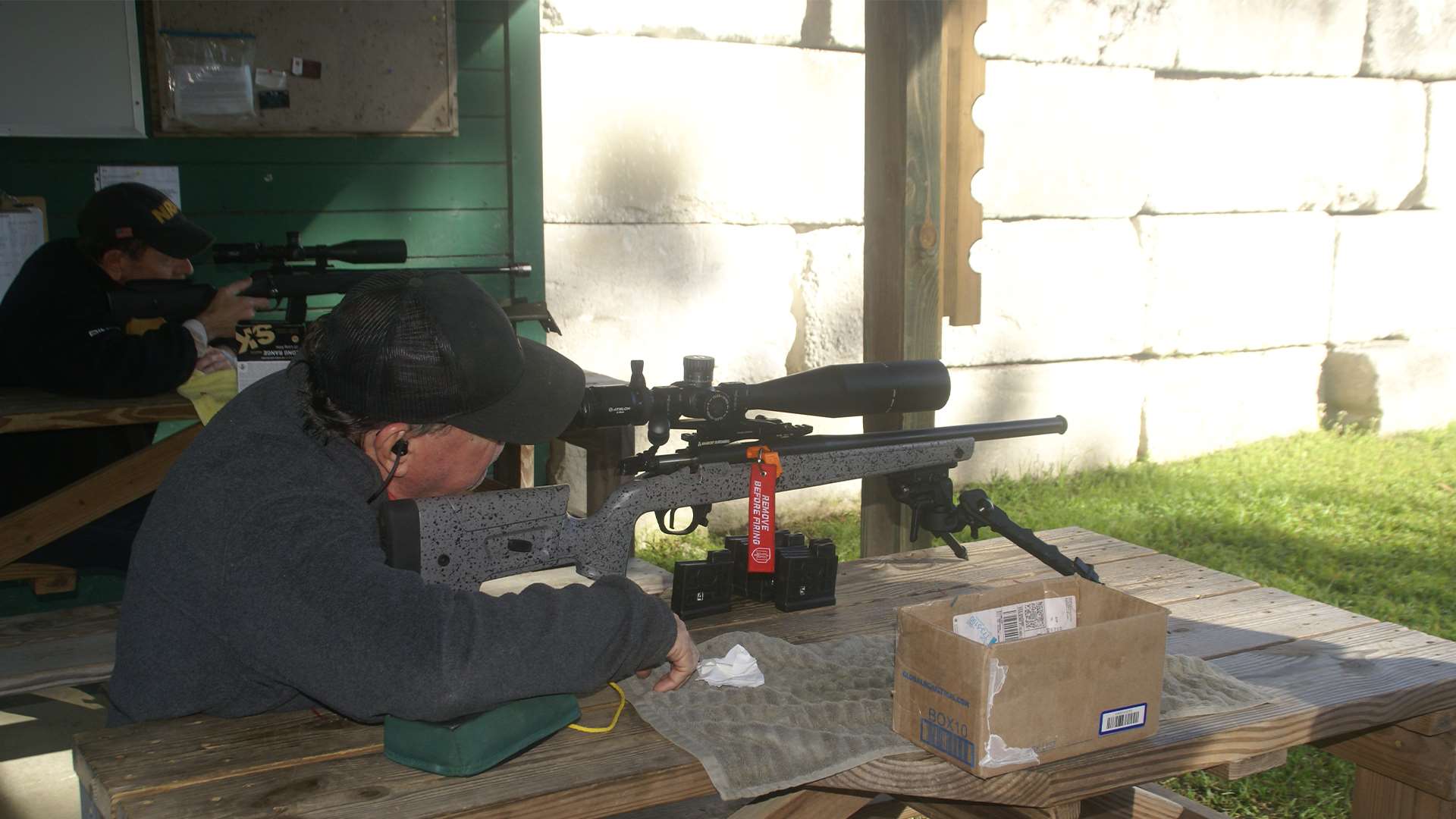
A shooter’s relay consists of engaging one plate rack by firing one round at each plate starting on the left, with the largest plate and continuing to the right towards the smallest plate. A hit will send the plate spinning over the top of the rack and re-defines the term “instant gratification.” On the flip side, a miss results in instant disappointment. But it gets worse than that.
Only one round is allowed per plate and any missed plate finishes a shooter’s relay. One miss and done. Shooting a target out of order also finishes that relay. Not only that, but in both cases the shooter also loses all of their previously acquired points on that relay. That’s the bad news. The good news is that a shooter is not required to engage all the plates. They may stop at any time and keep the points they have. As one Match Director noted, “That’s why they call it Know Your Limits. And if you don’t know them now, you’ll learn them quickly.”
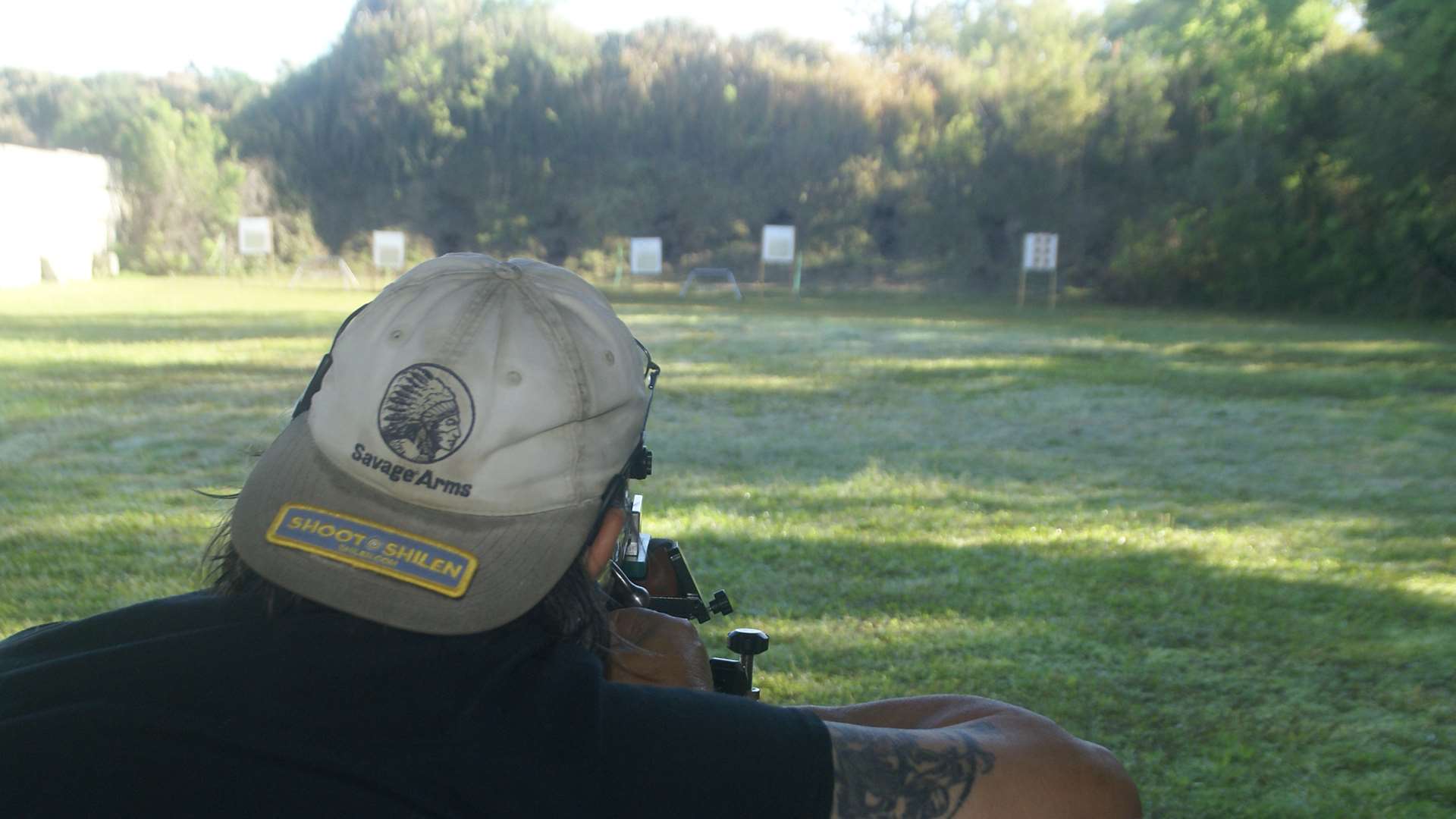
The option to stop and keep points, rather than risk a tough shot and lose them, opens the door to some interesting strategy decisions.
These are the “basic standards” accepted so far. But in the absence of a national governing body many clubs will modify them to suit their own, and their shooter’s, needs.
One plate rack is a relay and there is a time limit per relay. Two minutes is considered the norm, but clubs may set the time as quick as 60 seconds or as long as three minutes. Tabulating scores can also vary. Some clubs use a points per second scoring where the number of retained points is divided by the time it took to shoot them. This requires a range officer with a timer standing behind each shooter and may be beyond some club’s capabilities. Other clubs just go with the points within the string time and break ties by either a re-shoot with a faster stage time, or by moving the 50-yard target rack to 100 yards.
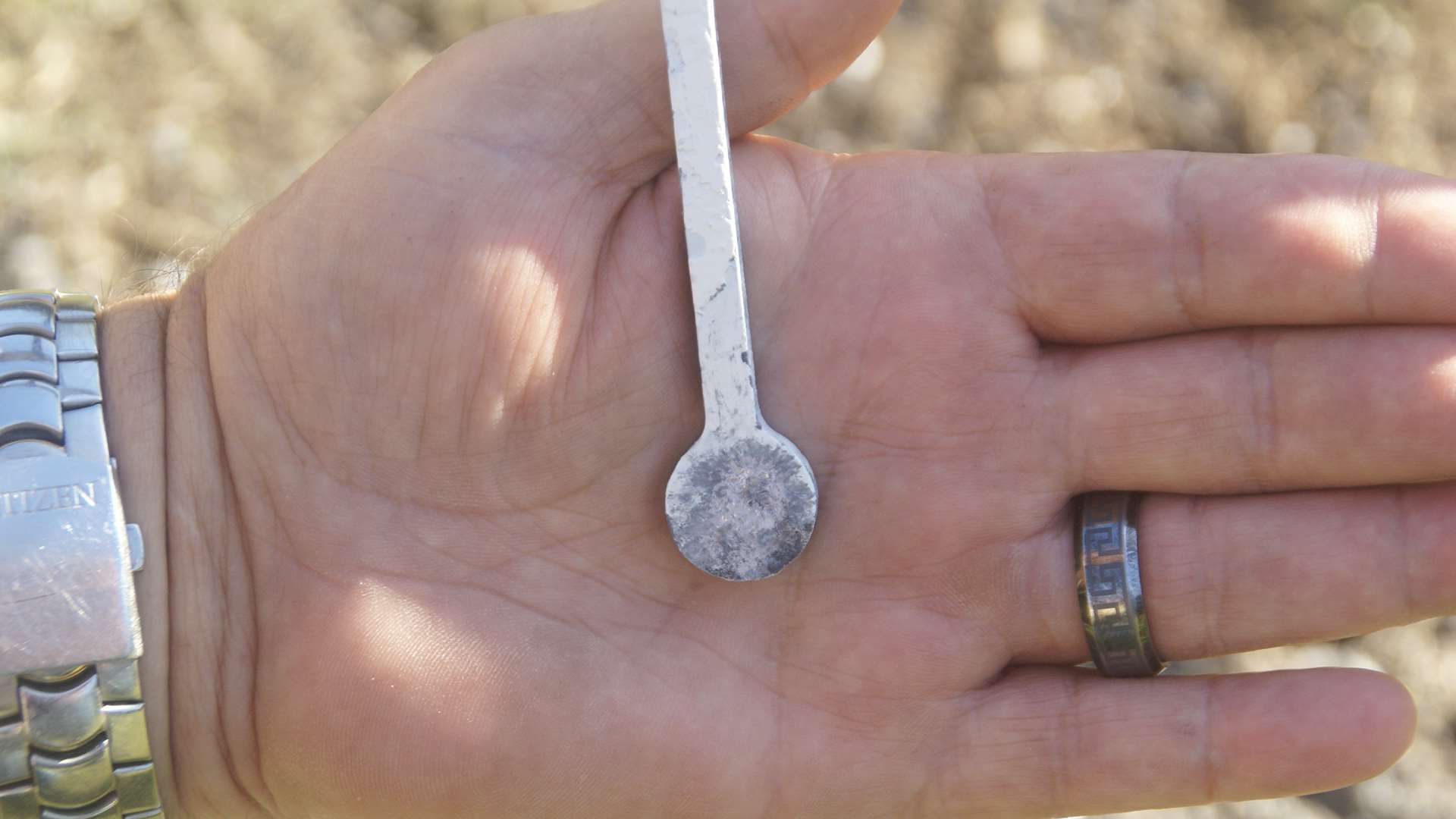
Rimfire rifles chambered in .22 Long Rifle are standard; however, some clubs also allow air guns. To prevent plate damage, loads with a velocity over 1,300 f.p.s. are prohibited. Scopes are nearly universal and there are no power limits. I have also heard that some clubs will allow iron sights in their own division for the truly adventurous. I have also heard, but cannot confirm, that some clubs allow .22 handguns, and some even placing the targets at 25 yards for them.
Shooters can fire from a bench or in prone position (their choice) unless otherwise dictated by that club’s match rules. One-piece mechanical “LeadSled-type” rests are prohibited, but a bipod or front sandbag is usually allowed, and many clubs allow a rear sandbag as well. Some clubs will allow adjustable front and rear two-piece rests. A few clubs have been known to hold matches sans rest and shoot from sitting or prone with a sling allowed.
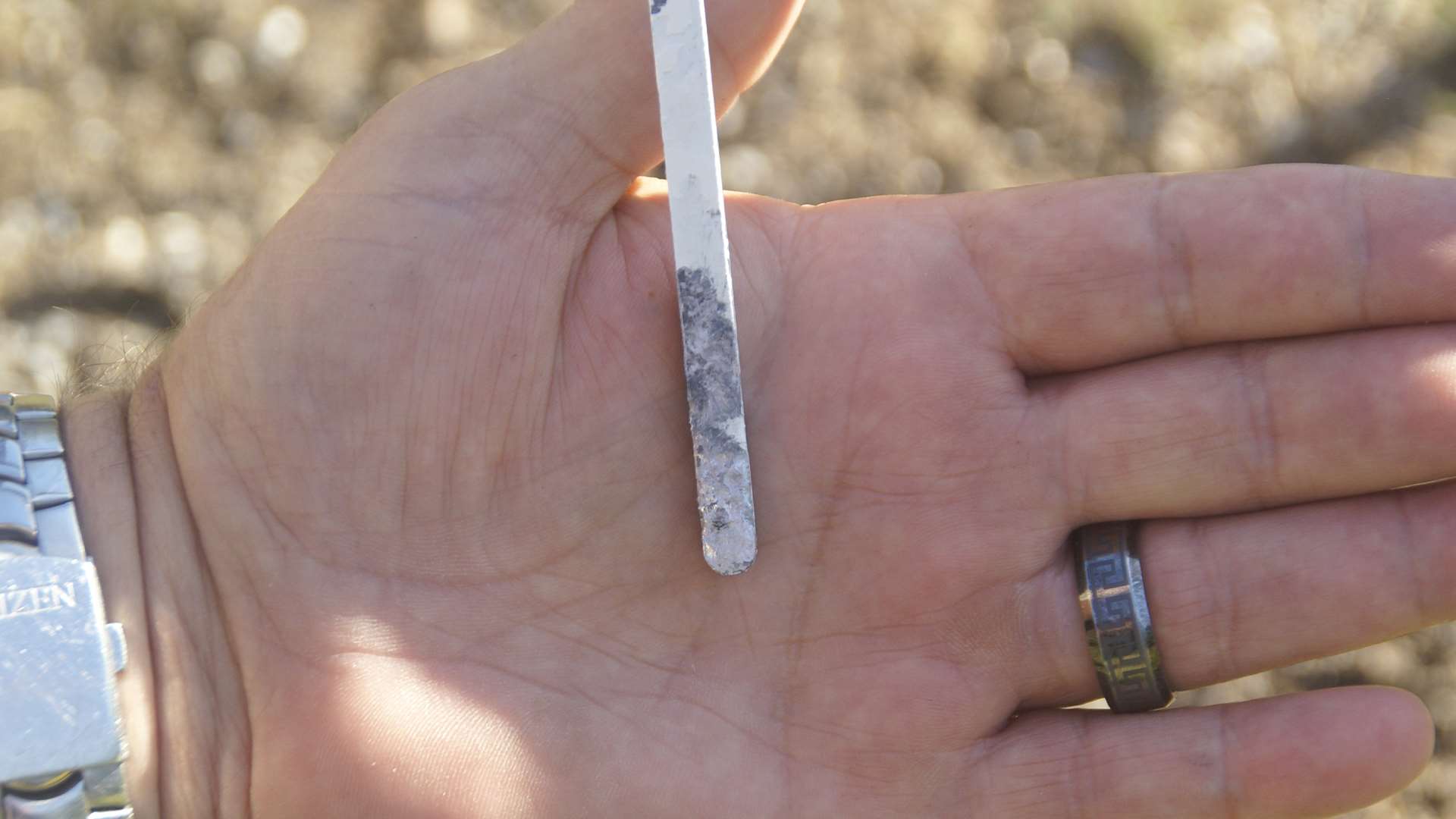
Most clubs will use a classification system for shooters, and that can vary. One popular system classifies by the gun used or the type of rest (if any) used. A standard “off-the-rack,” moderately priced rifle with a bipod would be in the lowest class. That same rifle with aftermarket parts like a custom trigger, barrel, stock, etc., would move up a class. A fully customized rifle with barrel tuner and front and rear adjustable rests would be in the Unlimited class. Other clubs may base a shooter’s class on past performance. In the absence of national standards, classification is determined by the club.
To say the KYL match is growing in popularity would be an understatement, and that growth often occurs in unusual ways.
“I knew nothing about the Know Your Limits match,” Jim Matrangos, who serves as the rifle range director at Florida’s Flagler Gun Club, said. “But a couple of our regular shooters heard about it somewhere and bought a couple of target racks. They brought them out to our 50-yard range and started shooting them.”
It didn’t take long before they started drawing a crowd.
“A number of shooters were interested,” he continued, “and they asked me if we could hold a match. I said why not. I think our first match had about a half-dozen shooters, but the numbers grew and now we have almost 20 shooters at our monthly match and that number is growing. The club had to buy a couple more 50-yard racks and some 100-yard racks to accommodate them. It’s gotten so popular that in addition to our monthly match, we now have a practice day every Thursday, and there’s plenty of shooters showing up for that. It’s been well received even in the short time we’ve had it here.”
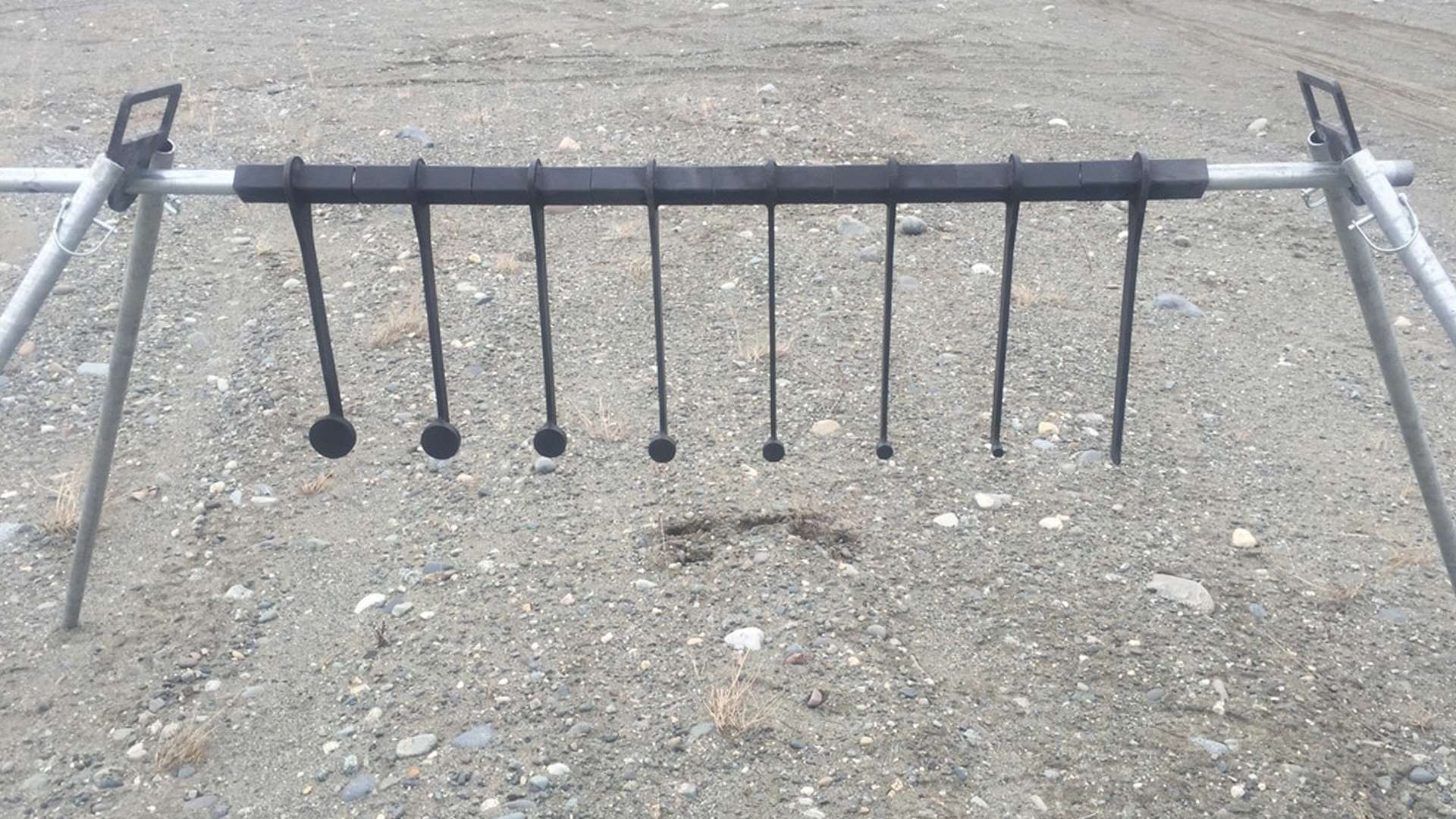
That seems to be the story at several clubs around the country. It appears that this acorn is flourishing. It may not be long before it becomes a national organization. There are several sources for targets, but targetsusa.com can also provide basic match information.














